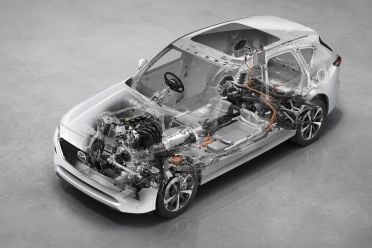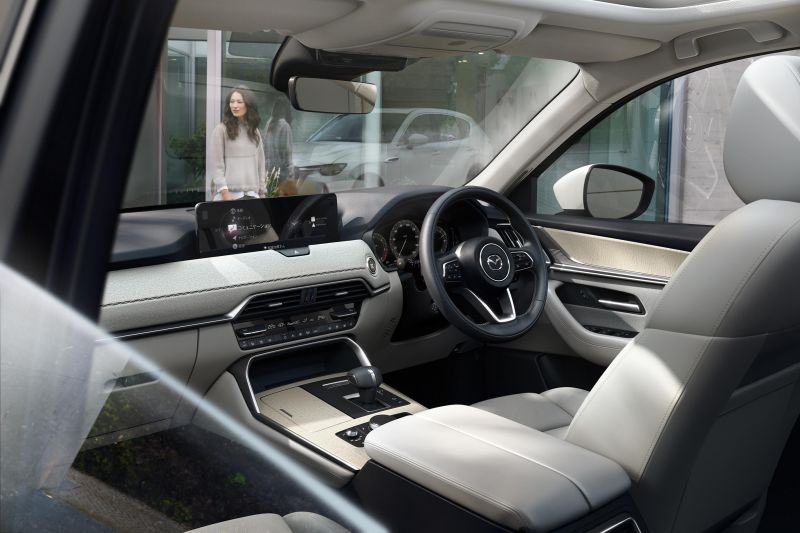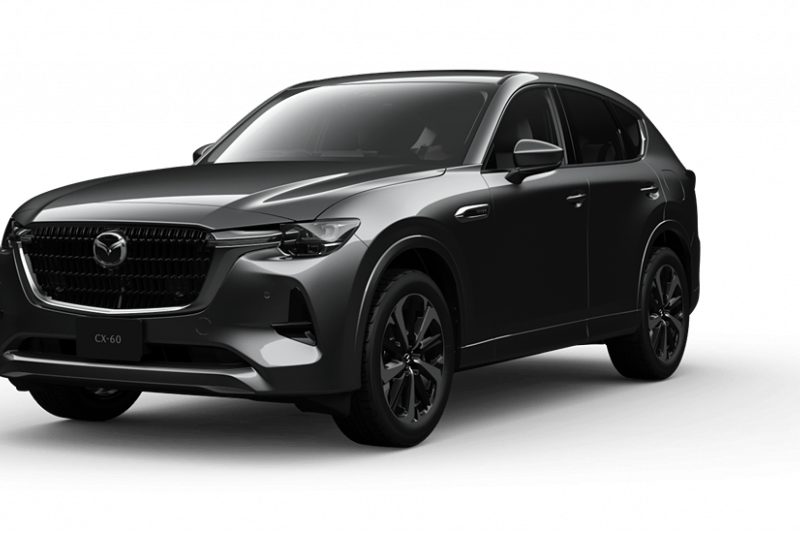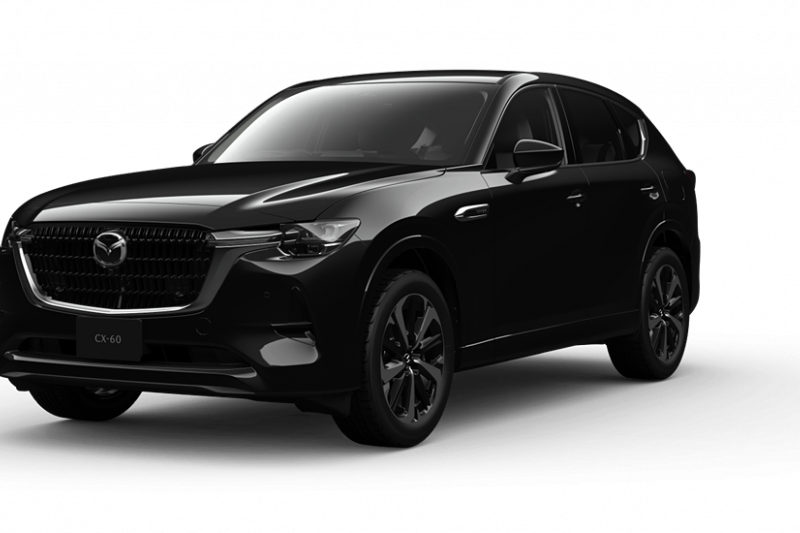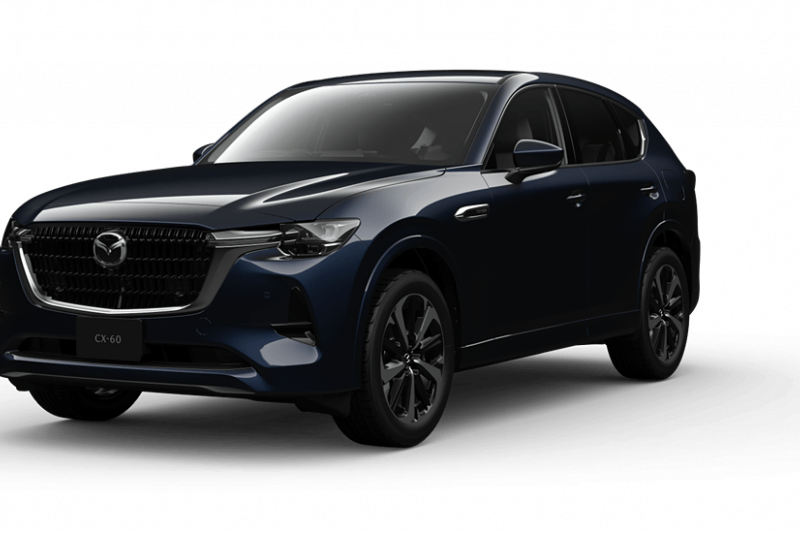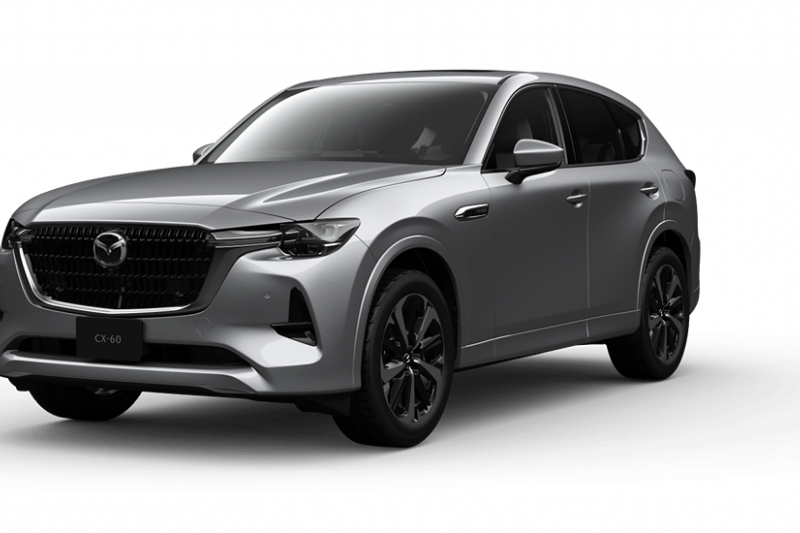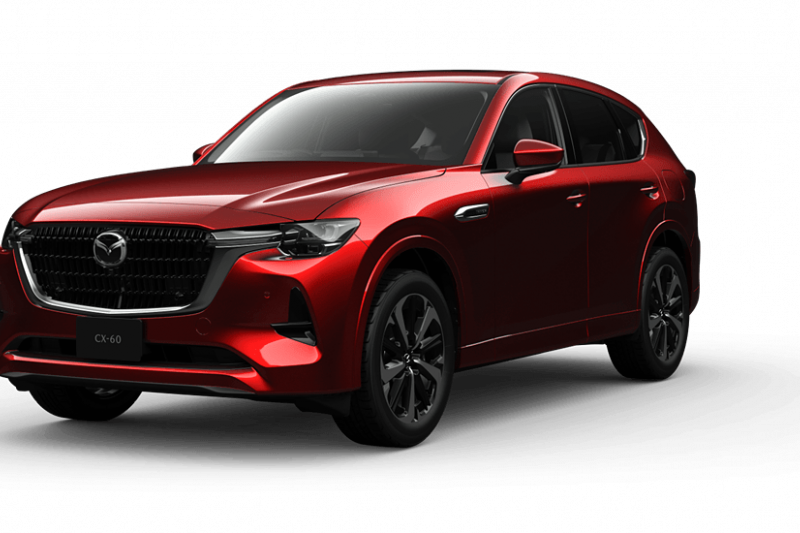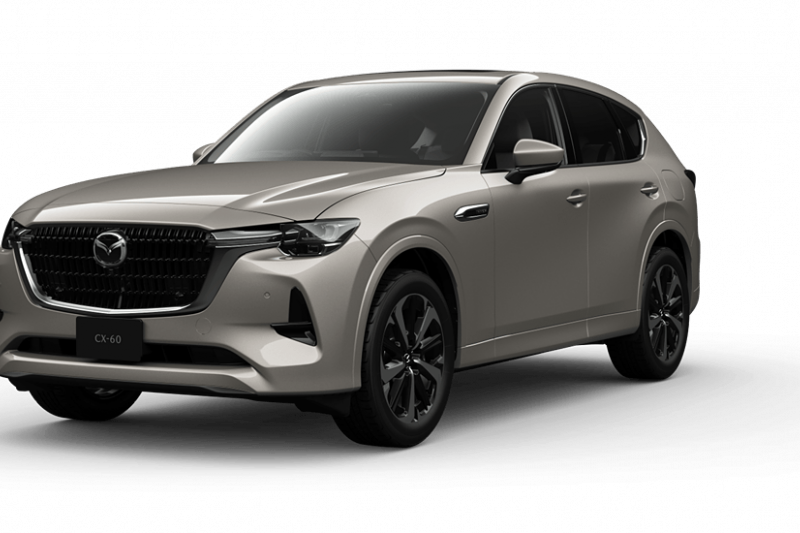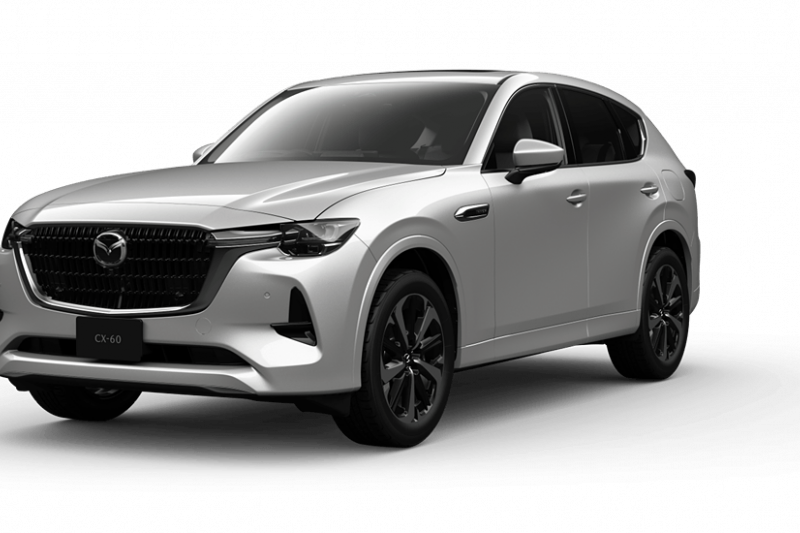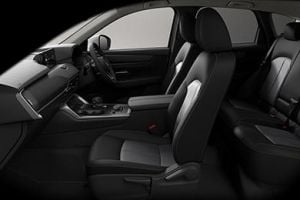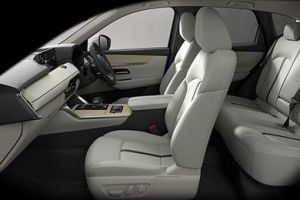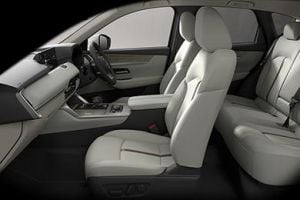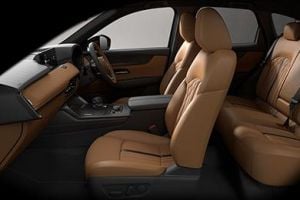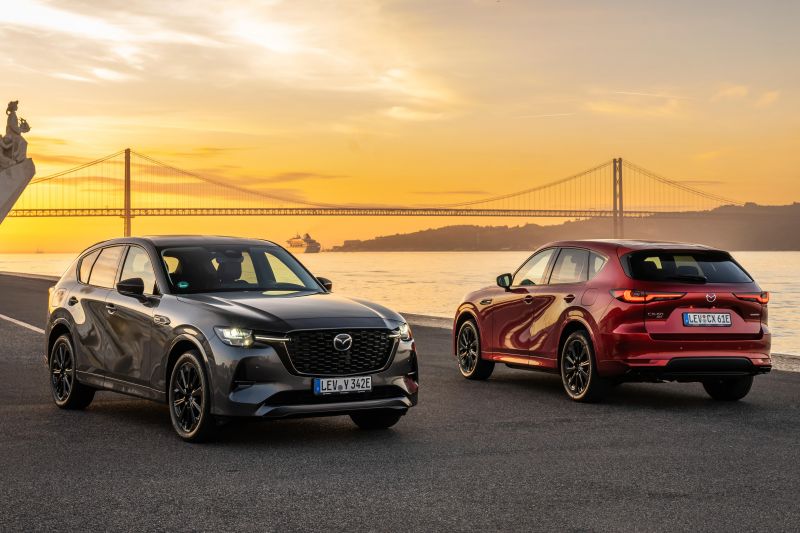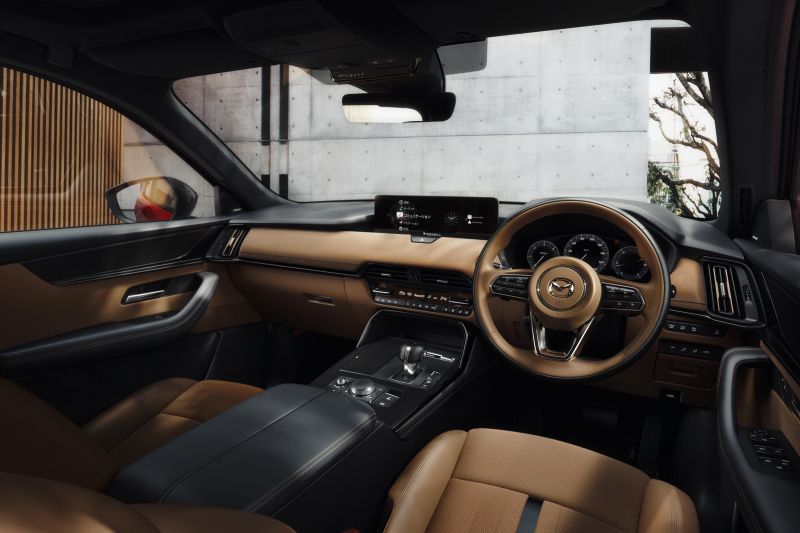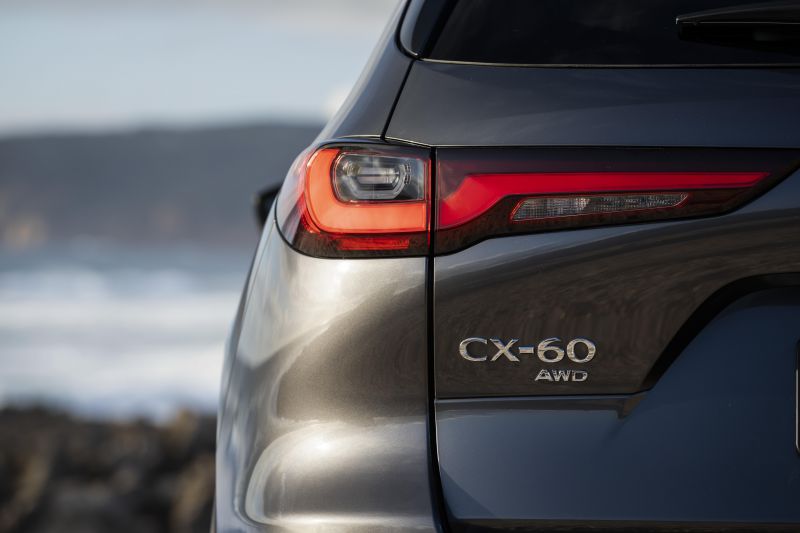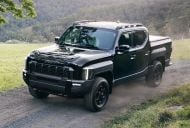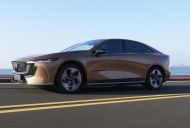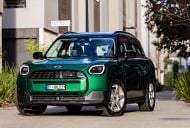The all-new Mazda CX-60 is now on sale in Japan with a full range of trims and powertrains, giving an early preview of what’s in store for Australia when the brand’s premium mid-size SUV launches before year’s end.
Pricing for Japan has also been confirmed, meaning we have clues about the new model’s positioning within the brand’s line-up – and the base model could be cheaper than a high-grade CX-5 based on overseas prices.
The most basic CX-60 S Package with the 2.5-litre petrol engine and rear-wheel drive starts at ¥2,992,000 ($31,802), with the all-wheel drive version priced from ¥3,217,500 ($34,198).
While a direct price conversion may not be indicative of local positioning, the base CX-60 is more affordable in its home market than Japan’s equivalent of our CX-5 GT SP 2.5 AWD (¥3,487,000 or $37,063), which in Australia starts at $48,990 before on-road costs.
This base CX-60 gets features like a 10.25-inch infotainment system dual-zone climate control, adaptive cruise control and fabric seats with manual adjustment.
Should Mazda aim for similar positioning locally and bring in a price-leading CX-60 variant, the Australian range could kick off under the $50,000 mark – well below the near-$60,000 starting point initially forecast.
Given Mazda is pitching the CX-60 as a premium car, however, it may go without a stripped-back entry model a-la the CX-5 Maxx or CX-8 Sport, instead starting with like the L Package specification in Japan.
The smaller CX-30 includes more basic Pure and Evolve trim levels with a high level of specification in terms of safety and technology, so the idea of a $45,000 entry-level CX-60 isn’t far fetched. The fact the base CX-60 is also cheaper than a base CX-8 in Japan – which kicks off at $40,190 locally – backs this up.
Powertrains
Four powertrains are available in Japan at launch; a 2.5-litre Skyactiv-G naturally-aspirated petrol, a 3.3-litre Skyactiv-D inline six turbo-diesel, a 3.3-litre e-Skyactiv D mild-hybrid inline six turbo-diesel, as well as a 2.5-litre e-Skyactiv PHEV plug-in hybrid.
Outputs are as follows:
| Engine | Power (rpm) | Torque (rpm) | Drivetrain |
|---|---|---|---|
| Skyactiv-G 2.5L | 138kW (6000rpm) | 250Nm (3000rpm) | 8AT RWD/AWD |
| Skyactiv-D 3.3L | 170kW (4000-4200rpm) | 500Nm (1500-3000rpm) | 8AT RWD/AWD |
| e-Skyactiv D 3.3L MHEV | 187kW (3750rpm) | 550Nm (1500-2400rpm) | 8AT AWD |
| e-Skyactiv PHEV 2.5L | 241kW (6000rpm) | 500Nm (4000rpm) | 8AT AWD |
Beyond the above specs, the 3.3-litre e-Skyactiv D’s 48V mild-hybrid system contributes 12kW and 153Nm, while the PHEV features a 17.8kWh lithium-ion battery pack good for 60 kilometres of electric range on the WLTP cycle.
The 2.5-litre atmo four and PHEV have already been confirmed for the Australian market, the former scheduled to arrive during the late stages of 2022 and the plug-in hybrid to follow not long after.
Mazda Australia hasn’t confirmed if it’s planning to bring either or both of the inline six diesels as yet, but the brand’s local arm has said previously “there’s a very comprehensive line up of powertrains that we will offer”.
In 2023 production of the new 3.0-litre e-Skyactiv X mild-hybrid inline six petrol engine will commence for global markets, bringing the global powertrain count to five.
Specs are scant at this stage, but the Skyactiv X branding signifies Mazda’s lean-burning compression-ignition petrol technology and supercharging – though the brand has confirmed there’s no turbo.
Like the diesels, Mazda’s local division hasn’t confirmed if the Skyactiv X inline six will make it to local showrooms, nor when.
For everything we know about the CX-60 engine line-up, click here.
Colours
The following finishes are available in Japan:
- Soul Red Crystal metallic
- Machine Grey premium metallic
- Rhodium White premium metallic
- Platinum Quartz metallic
- Jet Black mica
- Deep Crystal Blue mica
- Sonic Silver metallic
Soul Red Crystal, Machine Grey and Rhodium White all command a premium in the CX-60’s home market, which will likely be reflected in Australia. The entire colour palette is available across all CX-60 variants in Japan.
A range of interior colours and trims are offered in the domestic market, including black cloth, black leather, as well as Nappa leather in black, white or tan depending on grade.
We’re anticipating the white Nappa leather with natural wood inlays to be reserved for the highest specification in Australia as it is in Japan, with cloth trim to be reserved for the most basic trim level – that’s if Mazda Australia chooses to bring in a price-leading entry-level model.
Wheels ranging from 18 to 20 inches are offered globally depending on variant.
Australia
Mazda has been tight-lipped about what the CX-60 line-up will look like in Australia, having only confirmed the 2.5-litre models (both petrol only and plug-in hybrid) for our market thus far.
The brand is planning to release this all-new model in the late stages of 2022, with the base 2.5-litre petrol slated to be the first variant to arrive locally before the plug-in hybrid lobs early in 2023. As we’ve seen across the industry, this could be subject to change as companies continue to battle supply chain interruptions and component shortages.
It’s expected at least one of the six-cylinder engine variants will join the range at some stage, likely during the course of 2023, though Mazda Australia is yet to confirm these details.
Pricing and specifications for Australia are still to be confirmed, but it’s expected the CX-60 will play within the $50,000-$80,000 bracket, meaning high-spec models will compete with the Audi Q5, BMW X3, Lexus NX and Mercedes-Benz GLC.
The CX-60 is the first of several all-new models to be built on Mazda’s new Large Architecture platform, which offers rear-wheel drive and six-cylinder engines.
Mazda has confirmed four new SUV nameplates already – the CX-60, CX-70, CX-80 and CX-90. The CX-60 and CX-80 will be five- and seven-seat models respectively, targeted primarily at the European market, while the CX-70 and CX-90 are wider, and aimed at America.
It’s unclear whether the CX-80 and CX-90 will eventually replace the existing CX-8 and CX-9 globally given the similar nomenclature; Mazda has said previously these lines will be sold alongside each other for the foreseeable future.
As for which other cars will come to Australia? Mazda’s local arm has indicated it’s looking into all available options, but it’s understood the CX-70 is unlikely to come here.
The CX-60 has commenced production at Mazda’s Hofu Plant No. 2 in Yamaguchi, Japan.
Measuring 4740mm long, 1890mm wide and 1685mm tall with a 2870mm wheelbase, the CX-60 is 190mm longer, 50mm wider and 10mm taller than the CX-5, with a 170mm longer wheelbase.
It’s also 32mm longer, 1mm narrower and 9mm taller than a BMW X3 , and features a 6mm longer wheelbase than its German rival.
Stay tuned to CarExpert for all the latest, and let us know your thoughts in the comments below!
MORE: 2023 Mazda CX-60 PHEV review
MORE: 2023 Mazda CX-60 revealed
MORE: 2023 Mazda CX-60 – Full engine range on the table for Oz
MORE: 2023 Mazda CX-60 launching with 2.5L non-hybrid ahead of PHEV
MORE: Everything Mazda CX-60



